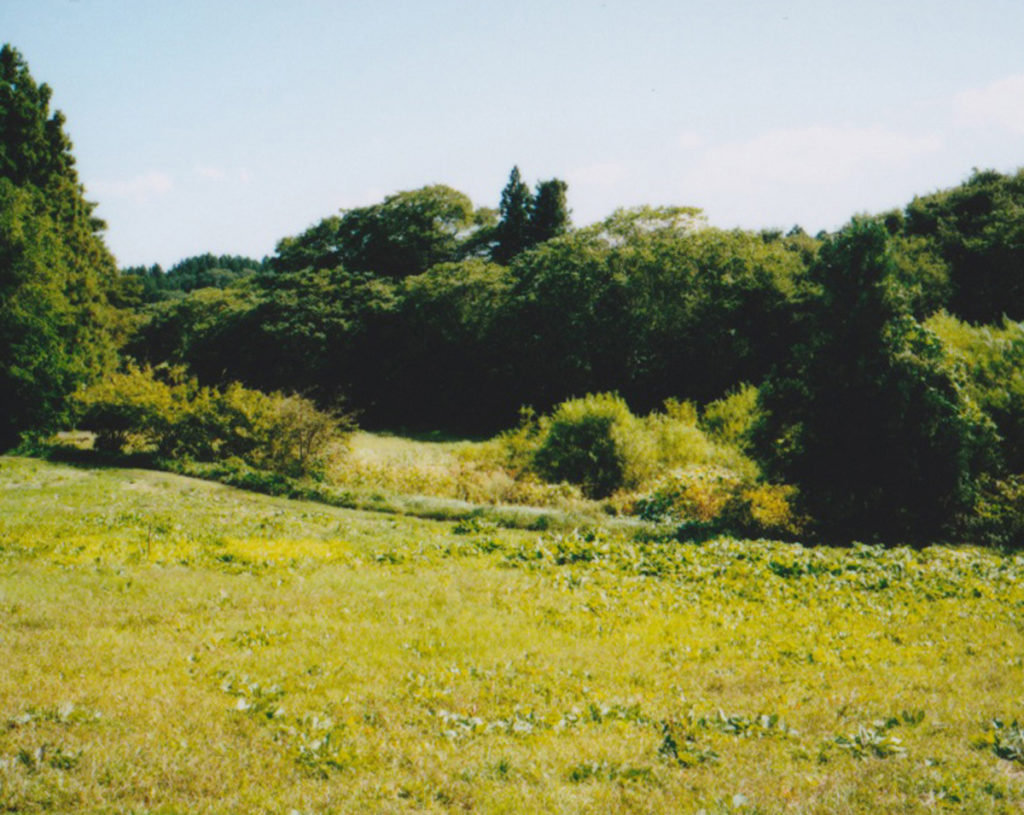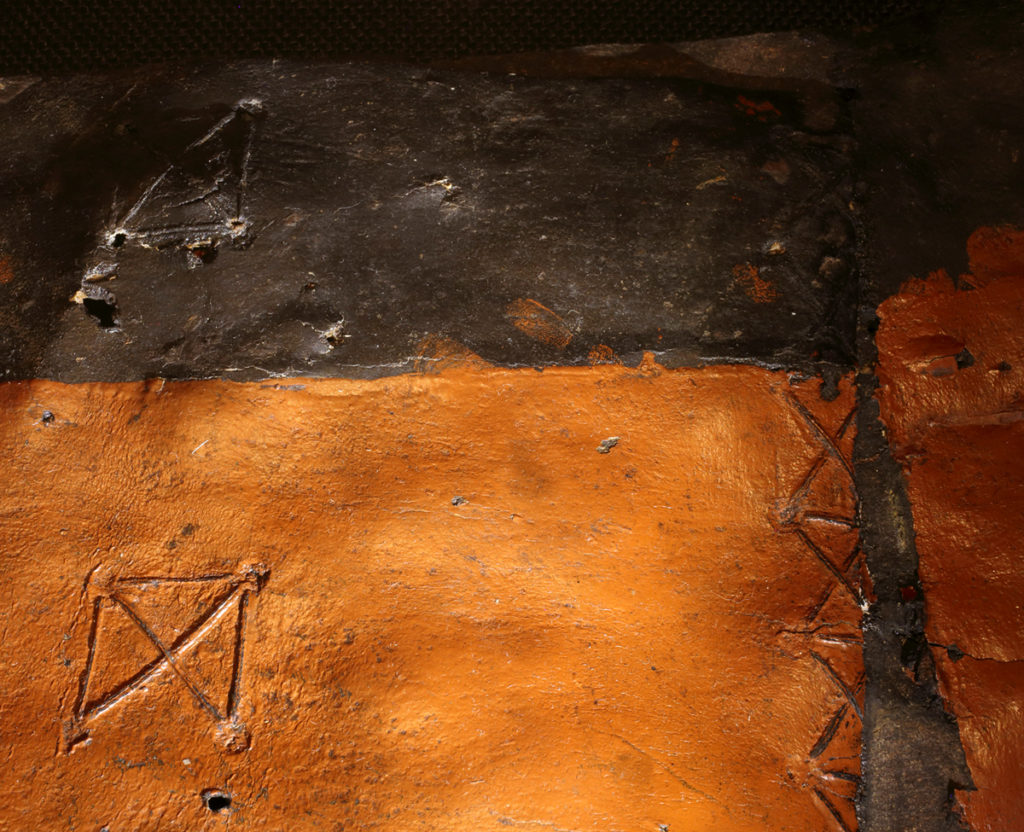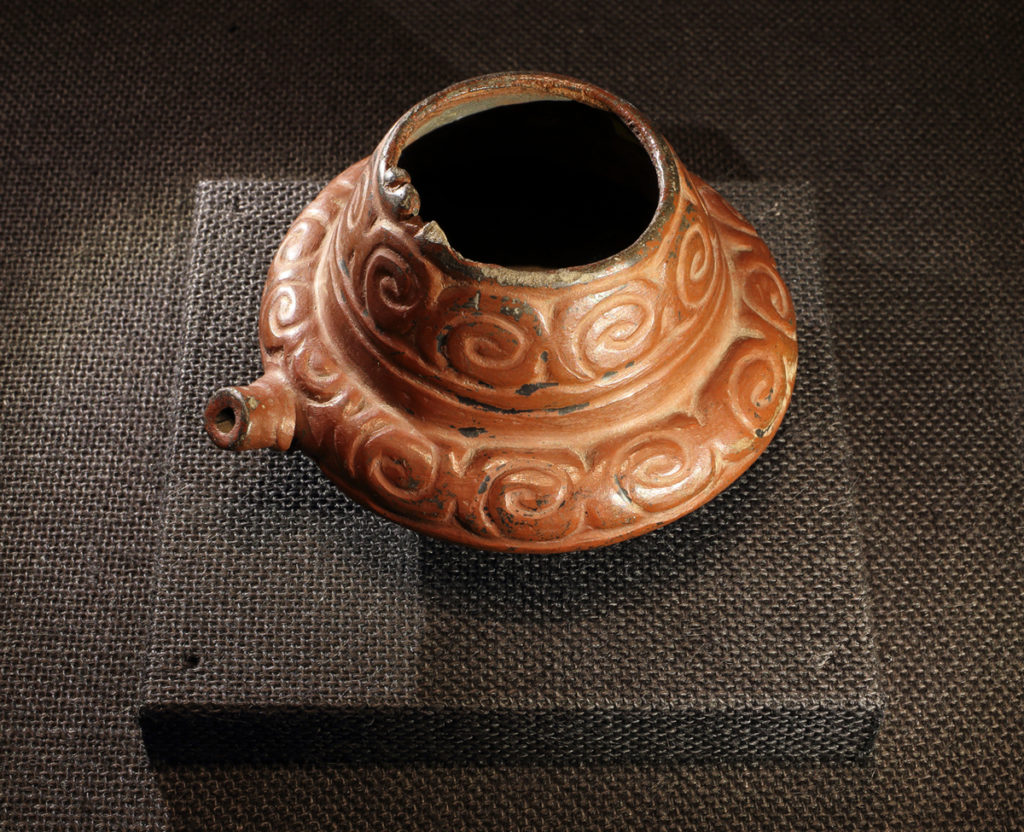In a World Coated in Black and Red
Once upon a time, about three millennia ago, there was a settlement on a terrace looking out over the Niida River, flowing from present-day northern Iwate Prefecture to the port city of Hachinohe in Aomori Prefecture. The people who came to live there had the skills to design a forest. They built their dwellings on an expanse of grassland and grew groves of chestnut, horse chestnut, and lacquer trees close by. Surrounding those were community-managed woods, the mountains, and farther beyond, a pathway leading deep into the primary forest. The people lived by hunting animals in this forest, like deer and wild boar, and by gathering the seasonal produce. Chestnuts and horse chestnuts were especially nutritional. After the harvest, the nuts were soaked in a pool to remove the bitterness before cooking. The people also used the river as a means to access marine products. Clearly, life in the settlement was sustained by the bounties of the mountain and the sea.
This story flowed naturally from my pen, as if I had transcended time and space and seen the Jomon people’s way of life with my own eyes, thanks to the Korekawa Archaeological Institution (Korekawa Jomon Kan). The facility may look like a museum, but it actually serves as Aomori Prefecture’s center for buried cultural properties. Other than the fine exhibition halls, half of the building is dedicated to storage and work space. Owing to the researchers’ and their predecessors’ unremitting efforts to dig into the earth and carry out investigative excavations, I was able to form a good mental picture of the bygone way of life and the surrounding natural environment.

I had made a stopover in Korekawa once in the past, before the Jomon Kan was established, and I never forgot the lacquerware I saw on that day. My visit this time was my second—I was lured by the desire to admire those Jomon colors again. Two widely recognized highlights of the Jomon culture are pottery and clay figurines called dogu. In this sense, the first colors that likely come to mind are tones of brown. If you were to visit Korekawa Jomon Kan expecting to see only brown, however, you would be in for a surprise. This is because quite a few plant-based relics, including lacquerware, have been unearthed at the Korekawa Site.
How did pieces of woodenware remain intact for three millennia? To answer your question (I can practically hear it), the relics were found in a swamp where the air supply was cut off, and this enabled the survival of lacquerware, animal and fish bones, and even seeds and pollen, whereas they would otherwise decay. The miracle finds included a lacquered bow and sword-shaped ornament with clearly visible original forms, and even parts of a bark container similar to a magewappa bentwood box from Akita Prefecture. My eyes were glued to the display case with the bark container. Distinct lines remained from the cord stitching applied during production, and on the lacquered surface close to the rim were the tiny fingerprints of a Jomon person. Perhaps a father or a mother crafted the box, and a child touched it before the coating had a chance to dry. The impressions were so vivid that they evoked the image of a family. I was told that a lid was found separately, and it was designed to fit over the black rim of the box to make it appear solid red.

The duet of red lacquer layered on black lacquer leaps out with a beautiful depth that is absent in a solo melody. I wondered if the colors had any special significance though. “The blood in our bodies is red while we are alive and turns black when we die. Lacquerware comes from a similar place”—I recalled the words of a researcher I once met on a tour of Jomon sites in northern Japan. If what he said was true, then our perspective of life and death in Japan must have originated with the Jomon people and been engraved further in our minds, little by little, ever since.

<PAPERSKY no.47(2015)>

Jomon Fieldwork | Nao Tsuda × Lucas B.B. Interview
A conversation between ‘Jomon Fieldwork’ Photographer and writer Nao Tsuda and Papersky’s Editor-in-chief Lucas B.B. The two discuss the ways Jomon culture continues to play an important role in modern day Japan. The video was filmed at Papersky’s office in Shibuya in conjunction with Tsuda’s exhibition “Eyes of the Lake and Mother Mountain Plate” held at the Yatsugatake Museum in Nagano.
Nao Tsuda | Photographer
Through his world travels he has been pointing his lens both into the ancient past and towards the future to translate the story of people and their natural world.
tsudanao.com











